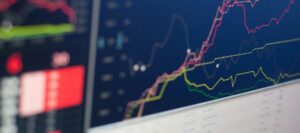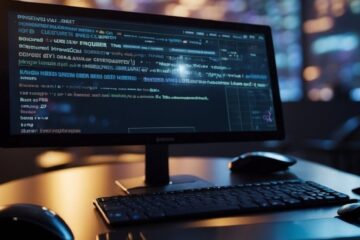In the dynamic world of financial markets, where milliseconds can mean the difference between profit and loss, trading bots have carved out a vital niche. These automated software systems are designed to conduct trades on behalf of individuals or institutions, harnessing algorithms to make swift trading decisions based on predefined criteria. Their capability to process vast amounts of data and execute trades at speeds no human trader can match has led to their widespread adoption across a variety of markets, including stocks, forex, and, notably, the burgeoning field of cryptocurrency.
The allure of trading bots extends beyond their speed and efficiency. They democratize trading by offering both retail and institutional traders the tools to implement sophisticated strategies without the need for constant market monitoring. This technological advancement has led to a surge in popularity, as traders seek to leverage these bots to gain a competitive edge in the increasingly complex and fast-paced financial markets. As a result, trading bots have become a cornerstone of modern trading operations, symbolizing the intersection of finance and technology in the quest for optimized trading performance.
Understanding Trading Bots

Trading bots are advanced digital tools programmed to conduct trades within diverse financial markets, adhering to specific, pre-set guidelines and tactics. Central to their operation, these automated intelligent crypto ai trading bots sift through market data, decipher it via embedded algorithms, and undertake trading actions aimed at leveraging market fluctuations. Utilizing intricate mathematical formulas, they’re adept at sifting through market trends, foreseeing the direction of markets, and placing orders with a level of accuracy and speed unattainable by humans.
These bots find their application across a spectrum of financial environments, most notably in the domains of stocks, forex, and cryptocurrencies. Each sector offers distinct prospects and hurdles, for which trading bots are intricately tailored. Particularly in the crypto sphere, smart AI-driven crypto trading bots have gained traction. These bots harness the power of artificial intelligence and machine learning, enabling them to modify their trading strategies dynamically, thus providing a superior analytical perspective aimed at profit maximization, something traditional bots fall short of.
The emergence of such smart systems signifies a pivotal evolution in trading tech, indicating a move towards more automated, streamlined, and accurate trading activities. By sidelining human error and the influence of emotions, trading bots introduce a more systematic trading method, attracting a broad spectrum of traders eager to refine their trading approaches.
How Trading Bots Work
At the heart of trading bots lies their capability to implement complex algorithms for analyzing financial markets and executing trades. These algorithms are grounded in mathematical models that can sift through massive datasets to identify potential trading opportunities. The real magic, however, begins with the integration of artificial intelligence (AI) and machine learning (ML). These technologies enable modern trading bots to not just follow static rules, but to learn from market conditions and evolve their trading strategies dynamically.
AI and ML play pivotal roles in enhancing the bots’ ability to predict market trends with a significant degree of accuracy. By continuously analyzing price movements, news, and market sentiment, these intelligent bots can make informed decisions swiftly. This process involves parsing through historical and real-time data, identifying patterns, and applying predictive models to gauge future market behaviors. Such a comprehensive analysis allows bots to determine the most opportune moments to execute trades, ensuring that strategies such as trend following, arbitrage, and market making are optimized for the best possible outcomes.
Advantages of Using Trading Bots

One of the most compelling advantages of trading bots is their ability to operate around the clock. Financial markets are dynamic, with opportunities emerging at any hour. Trading bots eliminate the need for constant human supervision, thereby maximizing the potential for profit. Additionally, by automating the trading process, these bots remove emotional decision-making from the equation. This leads to a more disciplined and consistent trading strategy, free from the biases and errors that often afflict human traders.
Trading bots excel in executing rapid trades at volumes that would be unmanageable for an individual trader. This is particularly beneficial in strategies that require high frequency and precision, such as trend following, where the bot can capitalize on market movements the moment they occur. Arbitrage strategies, which exploit price differences across exchanges, and market making, where the bot acts as a buyer and seller to provide market liquidity, are also areas where trading bots can significantly outperform human capabilities. The integration of advanced algorithms and AI ensures that these strategies are continuously refined, offering traders a powerful tool to enhance their market presence.
Challenges and Risks
While trading bots offer numerous advantages, they are not without their downsides. The complexity of software that powers these bots carries the risk of errors, which can result in unintended trades or financial losses. Additionally, security vulnerabilities pose a significant threat, as bots may handle sensitive financial information. The ever-changing nature of markets also presents a challenge; bots might not adapt as quickly as human intuition to sudden market shifts or unforeseen events, potentially leading to suboptimal trading decisions. It’s crucial for users to engage in ongoing monitoring and to be aware of the financial risks involved in automated trading.
Choosing a Trading Bot
Selecting the right trading bot requires careful consideration of several factors to ensure it aligns with your trading objectives and risk tolerance. Look for bots known for their reliability and transparency, providing clear insights into their operational mechanisms and performance history. Customizability is crucial, as it allows you to tailor the bot’s strategies to your specific trading preferences. Additionally, compatibility with your preferred trading platforms ensures seamless integration into your existing trading setup. Conducting due diligence by testing bots in controlled environments before their full deployment is vital for identifying any potential issues and ensuring the bot meets your expectations.
Conclusion
Trading bots represent a significant evolution in the financial trading landscape, offering the promise of automated, efficient, and emotion-free trading. However, their use comes with challenges and risks that necessitate careful consideration and ongoing oversight. As we embrace these advanced tools, it’s essential to conduct thorough research and assess our trading strategies and risk tolerance. Ultimately, a well-informed approach to selecting and using trading bots can significantly enhance trading performance while minimizing potential pitfalls.



0 Comments